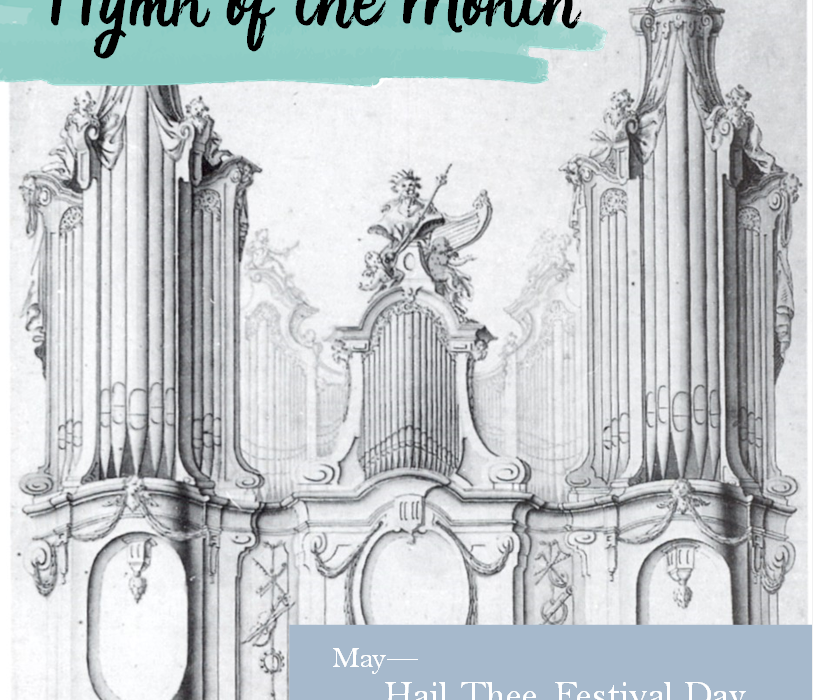Hymn of the Month
Hail Thee, Festival Day (LSB 489)
This month’s hymn is simultaneously replete in festal joy and ferocious in conquering might. I suppose that only makes sense, because it was written by the same guy who penned “Sing, My Tongue, the Glorious Battle.” That guy was none other than Venantius Fortunatus, a cultured man of the AD 500’s, who eventually became the bishop of Poitiers. His friend Felix of Nantes, bishop of a region in northwest Gaul, successfully converted a throng of fierce Saxon pagans; and as has been the ancient practice, they were to be baptized at the Easter Vigil. Fortunatus joined Bishop Felix for this joyous occasion. Being a man of poetry, he wrote “Hail Thee, Festival Day” to be used at the baptismal rite of that Vigil.
This hymn was originally a 110-line Latin poem. In fact, the line we use as the hymn title doesn’t appear until a solid third of the way through the poem. As you can imagine, it was a little lengthy for regular use, but by the 10th century had been cut down into a standard hymnic version, which is basically what we use today. As time went on, various lines were added to make it appropriate for more feast days. But enough prologue; let’s talk about the content of the hymn!
Fortunatus begins his poem with what, for the literature of the time, was an original thought: he compared the coming of springtime with the new life of the Resurrection. Long dormant in the death of winter, life bursts forth in the radiant color of violets, herbs, vines, and myrtle; these are merely Creation imitating the very death and life of her now-Risen Lord. These florid lines finally swell into the rapturous, “Hail Thee, Festival Day!” This day, the day our of Our Lord’s Resurrection, is a “blest day,” which is “hallowed” (i.e., made holy), for it is the “Day when our Lord was raised, Breaking the kingdom of death.” What a magnificent line.
Keep in mind as we examine the stanzas, that Fortunatus was writing this poem as a story for the newly baptized (remember those Saxons?). He was showing the meaning of Jesus’ death, conquering of hell, and resurrection to those who were now entering into that story.
We see in the first Easter stanza the poetic beauty of nature mentioned above; on the second page (yes, there are two pages… more on that later), the image is linked to the One who created that very nature, Jesus Himself, rising from the winter of death into New Life.
The Ascension stanza ponders the cross: once lifted upon that tree to die, our Lord is now exalted upon it as His throne. Fortunatus likens that instrument of death to a flowering tree, for now it blossoms with unending life, daily growing in loveliness.
Finally, we have the Pentecost stanza, which speaks of the Holy Spirit descending “Bright and in the likeness of fire” upon the apostles.
The last stanzas arise as a doxological prayer inspired by the proclamations of the previous stanzas. We beseech God the Almighty Lord to guard us from harm and evil; we invoke Jesus, who has created and redeemed us; and we plead that the Spirit of Life, font of our being, flow in us unto life everlasting.
Now to tackle the hard part: this hymn may seem scary at first glance, because it spans two pages, has multiple refrains, weirdly numbers its verses, and has rhythmic changes halfway through. But it’s worth a second glance! It is actually not that hard. You just read it from the top of the first page, all the way through to the bottom of the second. Wash, rinse, repeat. The only thing you have to know beforehand is whether we are celebrating Easter, Ascension, or Pentecost. And voila, there you are, singing a fantastic hymn the church has sung for over a thousand years!



